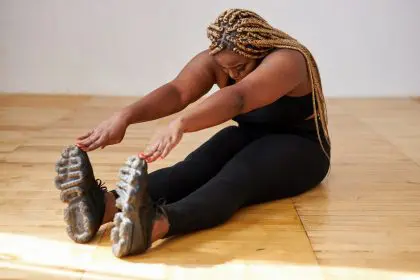Stretching is often viewed simply as a way to increase flexibility, but recent research suggests that its benefits extend far beyond this. In fact, stretching can enhance overall wellness, prevent injuries, and contribute to long-term health improvements. Proper techniques, when incorporated into daily routines, impact various body systems, from muscular health to the nervous system. As science continues to evolve in this area, the full scope of stretching’s advantages is becoming clearer.
Understanding stretching science
Stretching involves more than just elongating muscles; it stimulates complex physiological responses across multiple body systems. Modern research has revealed how different types of stretching affect various parts of the body, from muscle fibers to blood flow and brain function. These findings have significantly expanded our understanding of how stretching works and its broader health benefits.
Physiological benefits
Studies demonstrate the wide-ranging effects of stretching on the body. From enhancing muscle function to promoting better circulation, the benefits are evident across several systems:
- Musculoskeletal impact: Stretching helps maintain and improve muscle elasticity, joint mobility, and range of motion, all of which support better muscle recovery and injury prevention. Regular stretching ensures muscles are prepared for daily movements, reducing the risk of strains and tears.
- Circulatory enhancement: Proper stretching techniques boost blood flow, ensuring that oxygen and nutrients are delivered efficiently to tissues while waste products are removed more effectively. This circulation improvement can reduce muscle tension and contribute to faster recovery after exercise.
- Neurological benefits: Stretching has positive effects on the nervous system, including reducing the stress response and promoting parasympathetic activation, which helps the body relax. The practice also improves proprioception (the body’s sense of position) and enhances the mind-body connection, fostering both physical and mental well-being.
Types of stretching
Stretching comes in different forms, each with its unique advantages. The two most common types are static and dynamic stretching.
Static stretching principles
This traditional method involves holding a stretch for an extended period, typically 30-60 seconds, to increase flexibility. The focus is on relaxation and controlled movements. Static stretching is usually performed after a workout to help muscles recover and regain length after exercise.
Dynamic stretching methods
In contrast, dynamic stretching involves active movements that increase the range of motion, preparing muscles for physical activity. It is typically done before exercise, with controlled movement sequences designed to mimic the activity that follows. This type of stretching is especially useful in sports, as it enhances mobility and helps reduce the risk of injury during high-intensity activities.
Implementation strategies
To fully benefit from stretching, it’s important to integrate it into a regular fitness routine. The following strategies help ensure that stretching becomes a productive part of everyday health practices:
Daily routine integration
Consistent scheduling is key to a successful stretching regimen. It’s important to progressively increase the intensity of stretches and assess your flexibility regularly. This practice should be adapted to individual needs, considering factors like activity level and fitness goals.
Activity-specific approaches
Different activities require different approaches to stretching. For example, athletes should focus on sport-specific stretching techniques, while those in sedentary occupations may benefit from stretches that promote ergonomic alignment and counteract the effects of prolonged sitting. Older adults may need stretching routines tailored to their changing bodies and specific recovery needs.
Safety considerations
While stretching is beneficial, it’s essential to follow proper techniques to avoid injury. Stretching errors can lead to muscle strain or even more severe injuries if not performed correctly.
Proper technique fundamentals
Key principles for safe stretching include controlled movements, proper alignment, and awareness of breathing patterns. It’s crucial to listen to your body and avoid forcing muscles beyond their natural range of motion. Pain should never be part of the equation—any discomfort during a stretch should prompt an immediate adjustment.
Risk management
Stretching should be approached with a focus on individual limitations. Progressing gradually and consistently assessing technique will reduce the risk of strain. It’s advisable to seek professional guidance, particularly when starting a new stretching routine or dealing with pre-existing injuries.
Common mistakes
There are several common mistakes that people make when incorporating stretching into their routines. These errors can diminish the effectiveness of stretching and increase the likelihood of injury.
Technical errors
Some of the most frequent mistakes include bouncing movements, rushing through stretches without proper focus, and poor alignment. These errors not only reduce the effectiveness of the stretch but also heighten the risk of muscle strain.
Programming errors
Stretching routines also require careful planning. Inadequate warm-ups, improper timing, and inconsistent practice can hinder progress. A balanced approach, with attention to both flexibility and strength, is necessary for long-term health benefits.
Future developments
Stretching research continues to evolve, with exciting developments on the horizon. Scientists are currently investigating optimal timing patterns, technique refinements, and population-specific benefits. As technology advances, tools like movement analysis software and remote coaching are poised to further enhance how individuals approach stretching, making personalized guidance more accessible.
Technology integration
Incorporating technology into stretching routines can provide valuable insights. Tools that track progress, offer guided routines, and analyze movement quality are helping people optimize their stretching practices. For example, apps and wearables can monitor flexibility improvements and provide real-time feedback during workouts.
Practical applications
Stretching isn’t just for athletes or fitness enthusiasts—it’s a practical practice that can be incorporated into daily life for everyone. Morning routines, workplace breaks, and evening recovery periods are ideal times to focus on stretching. These brief sessions can make a noticeable difference in overall well-being, whether at home or at work.
Progress monitoring
Tracking progress is crucial for maintaining motivation and assessing improvement. Flexibility assessments, reductions in muscle pain, and improved movement quality can all be used to measure the effectiveness of a stretching routine. As improvements are made, it’s important to continue setting goals and adjusting techniques to maintain momentum.
Stretching has proven to be far more than just a way to improve flexibility. Its comprehensive benefits, including muscle recovery, improved circulation, neurological advantages, and injury prevention, make it a vital part of any fitness or wellness program. Through consistent practice, proper technique, and thoughtful progression, stretching can be a tool for lifelong health and well-being.
















